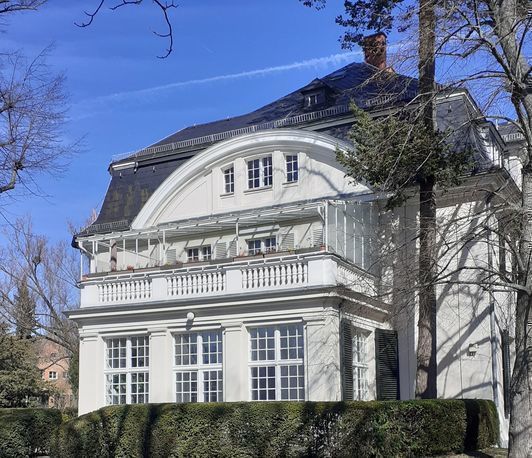New Experimental Platforms for Molecular Polaritonics
- MP Department Seminar
- Date: May 31, 2024
- Time: 09:30 AM c.t. - 10:30 AM (Local Time Germany)
- Speaker: Marissa L. Weichmann
- Princeton University,Department of Chemistry, see https://chemistry.princeton.edu/faculty-research/faculty/marissa-weichman/
- Location: Haber Villa
- Room: Seminar Room
- Host: Department of Molecular Physics
- Contact: green@fhi.mpg.de

Polaritons are hybrid light-matter states with unusual properties that arise from strong interactions between a molecular ensemble and the confined electromagnetic field of an optical cavity. Cavity-coupled molecules can demonstrate energetics, reactivity, and photophysics dramatically distinct from their free-space counterparts, but the mechanisms and scope of these phenomena remain open questions. I will discuss two new platforms my lab is building to investigate molecular reaction dynamics under vibrational strong coupling.
I will first discuss our recent demonstration of gas-phase molecular polaritons. While polaritons are now well-established in solution-phase and solid-state samples, they have not yet been reported in isolated gas-phase molecules, where attaining sufficiently strong light-matter interactions is a challenge. We show that the strong-coupling regime can be accessed for individual rovibrational transitions in cold, gas-phase molecules. We have built an apparatus that combines a cryogenic buffer gas cell with a feedback-stabilized optical cavity to reach this regime.
We are also setting out to survey cavity-altered reactivity in solution, focusing on radical hydrogen-abstraction processes. These reactions have well-characterized potential energy surfaces, they can be initiated with photolysis and tracked directly on ultrafast timescales, and they are accessible to theory. We are using ultrafast transient absorption measurements to examine intracavity reaction rates with the goal of pinpointing precisely how reactive trajectories may be influenced by strong light-matter interactions.